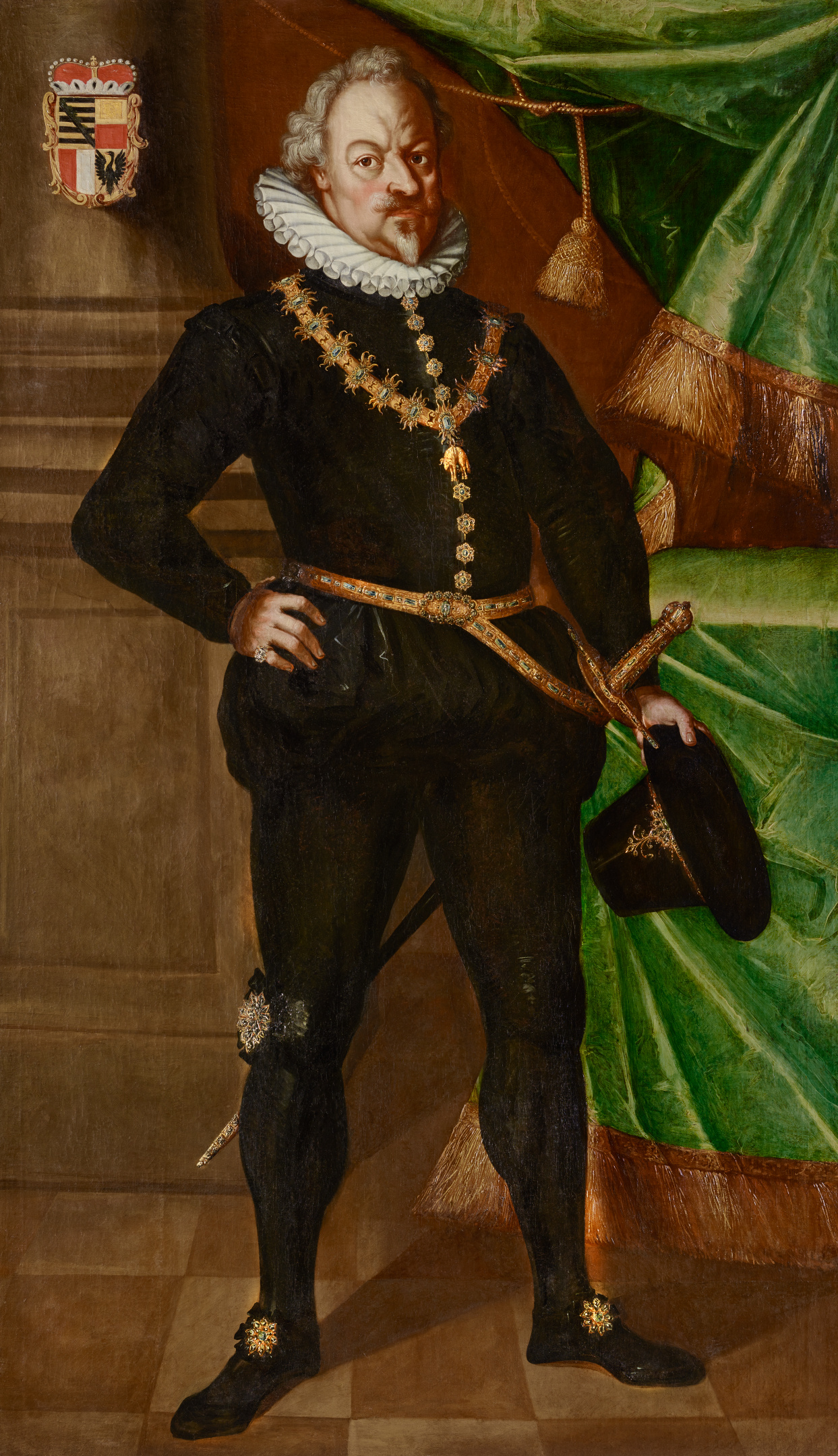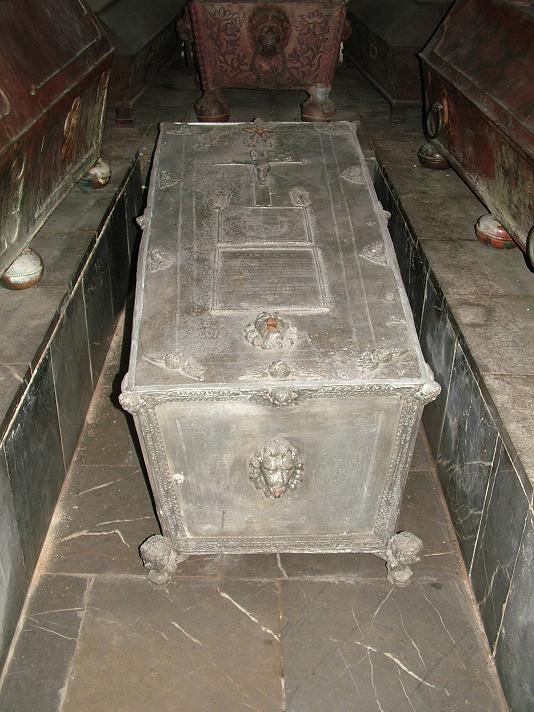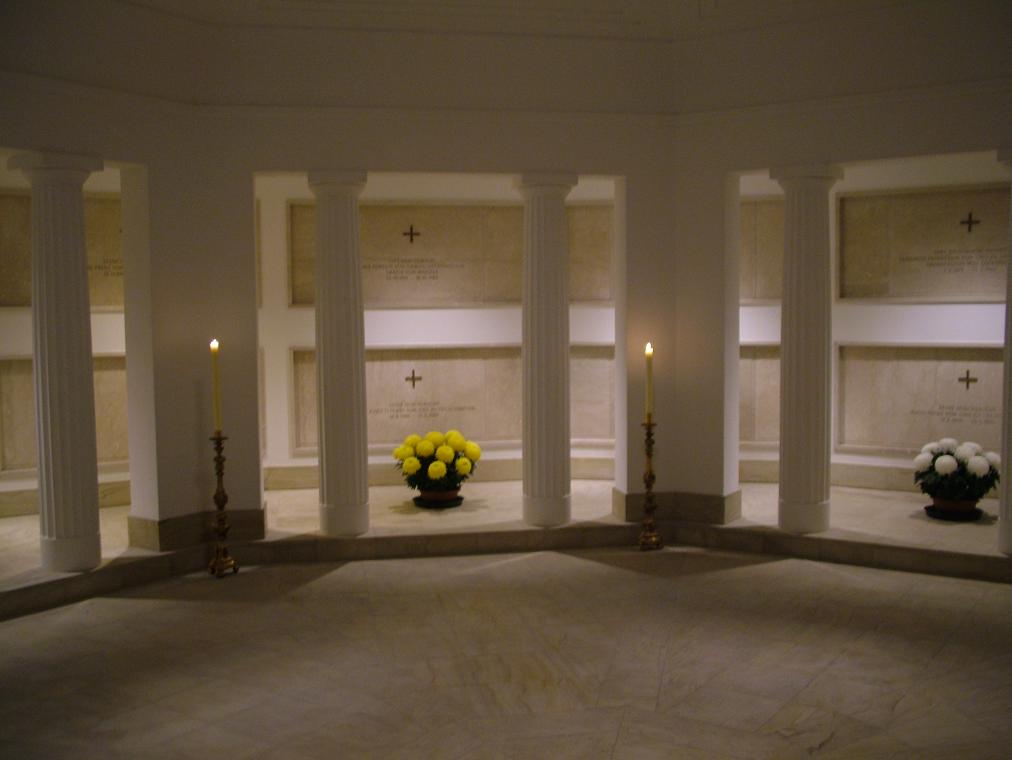by Susan Flantzer
© Unofficial Royalty 2022

Franz Josef I, Prince of Liechtenstein; Credit – Wikipedia
The nephew of Joseph Wenzel I, Prince of Liechtenstein, Franz Josef I reigned as Prince of Liechtenstein from 1772 – 1781. Franz de Paula Josef Johann Nepomuk Andreas was born on November 19, 1726, in Milan, Duchy of Milan, now in Italy. He was the eldest of the thirteen children and the eldest of the eight sons of Prince Emanuel of Liechtenstein (1700 – 1771) and Countess Maria Anna Antonia of Dietrichstein-Weichselstädt, Baroness of Hollenburg and Finkenstein (1706 – 1777).
Franz Josef had twelve younger siblings:
- Prince Karl Borromeo of Liechtenstein (1730 – 1789), married Princess Maria Eleonore of Oettingen-Spielberg, had seven children
- Prince Philipp Josef of Liechtenstein (1731 – 1757), unmarried, died in battle
- Prince Emanuel Josef of Liechtenstein (1732 – 1738), died in childhood
- Prince Johann Josef of Liechtenstein (1734 – 1781), unmarried
- Prince Anton Josef of Liechtenstein (1735 – 1737), died in childhood
- Prince Joseph Wenzel of Liechtenstein (1736 – 1739), died in childhood
- Princess Maria Amalia of Liechtenstein (1737 – 1787), married Johannes Siegmund Friedrich, 2nd Prince of Khevenhüller-Metsch, had seven children
- Princess Maria Anna of Liechtenstein (1738 – 1814), married Count Emanuel Philibert von Waldstein, had eleven children
- Princess Franziska Xaveria of Liechtenstein (1739 – 1821), Charles-Joseph, 7th Prince of Ligne, had seven children
- Princess Maria Christina of Liechtenstein (1741 – 1819), married Count Franz Ferdinand Kinsky von Wchinitz und Tettau, had four children
- Princess Maria Theresia of Liechtenstein (1741 – 1766), married Count Karl Joseph Pálffy ab Erdöd, Chancellor of Hungary, had two children
- Prince Josef Leopold of Liechtenstein (1743 – 1771), unmarried
Franz Josef’s father was the younger brother of Joseph Wenzel I, Prince of Liechtenstein who reigned from 1712 – 1718, was Regent from 1732 – 1745, and then reigned again from 1748 until he died in 1772. Joseph Wenzel had five children, including three sons, and all five died in early childhood. Noting that his nephew Franz Josef might be a future Sovereign Prince of Liechtenstein, Joseph Wenzel took him under his wing.

Franz Josef’s uncle Joseph Wenzel; Credit – Wikipedia
From the age of 20, Franz Josef accompanied his uncle Joseph Wenzel on military campaigns during the War of the Austrian Succession (1740 – 1748). He fought in the Battle of Piacenza where his uncle led the troops of the Holy Roman Empire to victory. Liechtenstein was a constituent state of the Holy Roman Empire. The Wars of the Austrian Succession ensured that Maria Theresa, the only surviving child of Holy Roman Emperor Karl VI, would be the sovereign ruler of the Habsburg territories. However, because only males could be elected Holy Roman Emperors, Maria Theresa arranged for her husband Francis Stephen, Duke of Lorraine, Grand Duke of Tuscany to be elected Holy Roman Emperor. Despite the snub, Maria Theresa, Archduchess of Austria, and Queen of Hungary, Croatia, and Bohemia wielded the real power. Maria Theresa was the sovereign ruler of the Habsburg territories from 1740 until she died in 1780, which coincides with the years of Franz Josef’s adulthood and his reign as Sovereign Prince of Liechtenstein.

Franz Josef’s wife Leopoldine; Credit – Wikipedia
On July 6, 1750, Franz Josef married Countess Leopoldine von Sternberg, the daughter of Count Franz Philipp of Sternberg and Countess Leopoldine of Starhemberg.
Franz Josef and Leopoldine had eight children:
- Prince Josef Franz of Liechtenstein (1752 – 1754), died in childhood
- Princess Leopoldina of Liechtenstein (1754 – 1823), married Karl Emanuel, Landgrave of Hesse-Rheinfels-Rotenburg, had one son
- Princess Maria Antonia of Liechtenstein (1756 – 1821), became a nun
- Prince Franz de Paula Josefof Liechtenstein (1758 – 1760), died in childhood
- Alois I, Prince of Liechtenstein (1759 – 1805), married Karoline von Manderscheid-Blankenheim, no children
- Johann I Josef, Prince of Liechtenstein (1760 – 1836), married Landgravine Josepha of Fürstenberg-Weitra, had fourteen children
- Prince Philipp Josef of Liechtenstein (1762 – 1802), unmarried
- Princess Maria Josefa of Liechtenstein (1768 – 1845), married Nikolaus 7th Prince Esterházy von Galántha, had two children
Franz Josef participated in a number of diplomatic missions on behalf of the Holy Roman Empire. In 1760, Franz Josef accompanied his uncle Joseph Wenzel on a trip to the Duchy of Parma, now in Italy, where they accompanied Princess Isabella of Parma to Vienna, Austria where she married Archduke Joseph of Austria, the future Holy Roman Emperor. In 1761, Franz Josef accompanied Prince Charles Alexander of Lorraine, brother of Holy Roman Emperor Francis Stephen, who was a Field Marsal of the Imperial Army, and Governor of the Austrian Netherlands to Mergentheim Palace, the administrative seat of the Teutonic Order, then in Bad Mergentheim, Fraconia, now in the German state of Baden-Württemberg. There Prince Charles Alexander was unanimously elected the 52nd Grand Master of the Teutonic Order.
In 1763, Franz Josef traveled to Spain during the marriage negotiations for Archduke Leopold of Austria, the future Holy Roman Emperor, to give his potential (and future) bride Infanta Maria Luisa of Spain a portrait of Archduke Leopold. In 1767, Franz Josef was made a member of the Imperial Privy Council and in 1771 he became the 802nd Commander of the Order of the Golden Fleece. In 1778, Franz Josef was appointed president of the Lower Austrian nobility assembly.
When Franz Josef’s uncle Josef Wenzel, Prince of Liechtenstein died on February 10, 1772, with no surviving sons, he was succeeded by his nephew as Franz Josef I, Prince of Liechtenstein. Franz Josef immediately resigned from all his governmental duties of the Holy Roman Empire. Instead, he devoted himself to the administration of his estates. Franz Josef’s wealth significantly increased in 1772 when he received an inheritance from Maria Theresia, Duchess of Savoy-Carignano who had been born Princess Maria Theresia of Liechtenstein, the only surviving child of Hans-Adam I, Prince of Liechtenstein. Maria Theresia’s only child predeceased her and Franz Josef was her distant, but nearest, relative.

Church of the Nativity of the Virgin Mary in Vranov, Czech Republic: Credit – Von Ojin – Eigenes Werk, CC BY-SA 3.0, https://commons.wikimedia.org/w/index.php?curid=6438939
Franz Josef I, Prince of Liechtenstein, died August 18, 1781, aged 54, in Metz, France. He was buried in the Old Crypt at Chuch of the Nativity of the Virgin Mary in Vranov, Moravia, now in the Czech Republic. After Franz Josef’s death, his widow Leopoldine lived with one of her daughters in Vienna, Austria. She survived her husband by twenty-eight years, dying at the age of 75 on June 27, 1809, and was buried at St. Andrew’s Church in Vienna-Hütteldorf, Austria.
This article is the intellectual property of Unofficial Royalty and is NOT TO BE COPIED, EDITED, OR POSTED IN ANY FORM ON ANOTHER WEBSITE under any circumstances. It is permissible to use a link that directs to Unofficial Royalty.
Works Cited
- De.wikipedia.org. 2021. Franz Josef I. (Liechtenstein) – Wikipedia. [online] Available at: <https://de.wikipedia.org/wiki/Franz_Josef_I._(Liechtenstein)> [Accessed 4 December 2021].
- En.wikipedia.org. 2021. Franz Joseph I, Prince of Liechtenstein – Wikipedia. [online] Available at: <https://en.wikipedia.org/wiki/Franz_Joseph_I,_Prince_of_Liechtenstein> [Accessed 4 December 2021].
- Fuerstenhaus.li. 2021. Century: 18th century. [online] Available at: <https://fuerstenhaus.li/en/die-biographien-aller-fuersten/18-century/> [Accessed 4 December 2021].
- geni_family_tree. 2021. Emanuel, Fürst von und zu Liechtenstein. [online] Available at: <https://www.geni.com/people/Emanuel-F%C3%BCrst-von-und-zu-Liechtenstein/5062354675600102553> [Accessed 4 December 2021].
- Ru.wikipedia.org. 2021. Франц Иосиф I фон Лихтенштейн — Википедия. [online] Available at: <https://ru.wikipedia.org/wiki/%D0%A4%D1%80%D0%B0%D0%BD%D1%86_%D0%98%D0%BE%D1%81%D0%B8%D1%84_I_%D1%84%D0%BE%D0%BD_%D0%9B%D0%B8%D1%85%D1%82%D0%B5%D0%BD%D1%88%D1%82%D0%B5%D0%B9%D0%BD> [Accessed 4 December 2021].































